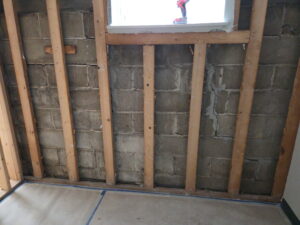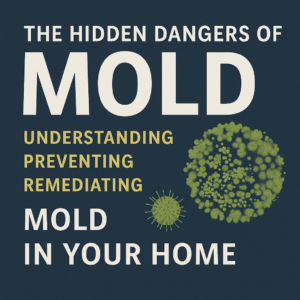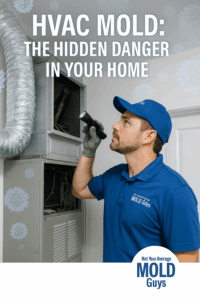Many homeowners only think about a remodel — new cabinets, fresh paint, updated floors. What they don’t always consider: behind walls, under flooring, or above ceilings, hidden mold could be silently spreading. Disturbing those areas during renovation can release spores into the air — creating a health risk and potentially turning a dream update into a costly cleanup.
It’s more common than you think. And it doesn’t mean your home is “bad.” It simply means moisture found a place to settle… and mold took advantage of it.
Professional Mold Removal: Why It Matters in Chicago Homes
When hidden mold is discovered during a renovation, professional mold removal is critical to fully protect your home and family. Licensed mold remediation specialists in Chicago use advanced techniques to remove mold from walls, floors, ceilings, and HVAC systems. Unlike DIY solutions, professional mold removal services target the source of moisture, eliminate spores, and prevent cross-contamination, ensuring a long-term solution. From basement mold removal to bathroom mold remediation and attic mold removal, our experts follow strict protocols to restore your home safely. Investing in professional mold removal during renovations not only safeguards your family’s health but also protects your renovation investment and increases the overall value of your home.
If you’re renovating a home in Chicago, Aurora, Naperville, Bolingbrook, Oswego, Batavia, or the surrounding suburbs, here’s what you need to know when hidden mold suddenly becomes part of your project.
Why Mold Often Shows Up During Renovations
Renovations expose areas of the home that have been sealed for decades. That’s why mold tends to appear in older Chicago homes built from the 1950s through the early 2000s.
1. Old Plumbing Behind Walls
Many Chicagoland homes have original or aging plumbing systems. Even a slow drip over years can feed mold behind walls or under cabinets. Hidden leaks are one of the most common causes of mold during renovations.
2. Historic Chicago Humidity
Our summers are humid, and winter condensation is common. Moisture from air or snow can get trapped in poorly ventilated spaces like attics, basements, or behind window frames — creating ideal conditions for mold.
3. Previous Water Damage That Was “Covered,” Not Fixed
Painted-over stains, DIY patches, or quick flips often hide water issues rather than resolving them. Renovation work like pulling up flooring, opening walls, or removing cabinets can suddenly reveal mold that’s been quietly growing for years.
4. Leaky Windows and Rooflines
Older frames and worn sealants can let in moisture for years without showing visible damage — until renovations open up the space. Ice dams, rainwater, and even humidity can cause water to seep into walls and ceilings.
Common Signs That Mold is Hiding in Your Home
Not all mold is obvious. Some common clues to look for during renovations include:
-
Musty, earthy odors
-
Discolored walls, ceilings, or baseboards
-
Bubbling, peeling, or warped paint or wallpaper
-
Warped or buckling floors
-
Allergy-like symptoms that improve when outside the home
-
Visible black, white, or green mold in hidden corners
-
Past water damage or plumbing issues
If you notice any of these signs while renovating, it’s critical to stop work and call a professional before the problem spreads.
Why DIY Cleaning Isn’t Enough
Many homeowners think a little bleach and scrubbing can solve mold issues. Unfortunately, DIY methods rarely remove the problem completely.
-
Mold grows inside walls, under flooring, and in insulation — areas you can’t see.
-
Scrubbing may remove surface stains but won’t eliminate spores or moisture.
-
Disturbing mold improperly can release spores into the air, spreading the problem to other rooms.
Professional mold remediation is the only way to ensure that hidden mold is safely removed and the source of moisture is addressed.
The Safe Way to Handle Hidden Mold During Renovations
Here’s the step-by-step approach Chicago homeowners should follow:
1. Stop the Renovation
Continuing work can disturb mold and spread spores throughout your home.
2. Call a Certified Mold Remediation Company
Professionals (like Not Your Average Mold Guys) use containment systems, HEPA filtration, and safe removal techniques to protect both your home and your family.
3. Identify the Cause of Moisture
Fixing the source of moisture is the only way to prevent mold from returning. This may include repairing leaks, improving ventilation, or upgrading insulation.
4. Document the Issue
Photos and professional reports are helpful for insurance claims, warranties, and future home sales.
5. Resume Renovations After Clearance
Once remediation is complete and clearance testing confirms mold is gone, you can safely continue your renovation project.
How Mold Remediation Benefits Your Renovation
While mold discovery can feel like a setback, professional remediation actually benefits your project:
-
Prevents structural damage before it worsens
-
Ensures a healthy indoor environment for your family
-
Protects your renovation investment
-
Allows for proper installation of flooring, cabinetry, or walls
-
Reduces future repair costs
Taking care of mold early can save time, money, and headaches down the road.
Where Mold Is Most Commonly Found During Renovations in Chicago Homes
-
Behind shower tiles and bathroom walls
-
Beneath vinyl, laminate, or hardwood flooring
-
Around toilets, tubs, and sinks
-
Inside drywall near kitchens or laundry rooms
-
Around HVAC ducts or air handling systems
-
Under carpets after past spills
-
In basements and crawl spaces with poor drainage
-
Behind old insulation in attics
Even a small amount of mold can quickly become a bigger problem if left unchecked.
Protect Your Chicago Home and Family
Chicago homeowners face unique challenges with mold due to our humid summers, freezing winters, and older housing stock. Hidden mold doesn’t have to ruin your renovation or compromise your health. With proper inspection and professional remediation, you can continue your project safely and confidently.
Contact Not Your Average Mold Guys — Chicago’s Trusted Mold Removal Experts
📞 Phone: (630) 401-2072
📍 Address: 2425 Oakfield Dr, Aurora, IL 60503
🌐 Website: notyouraveragemoldguys.com
💬 Schedule Service: https://www.notyouraveragemoldguys.com/contact/








